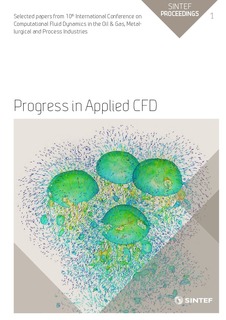Cool down simulations of subsea equipment
Chapter
Published version
Permanent lenke
http://hdl.handle.net/11250/2464804Utgivelsesdato
2015Metadata
Vis full innførselSamlinger
- SINTEF Proceedings [402]
Sammendrag
Experiments and numerical conjugate heat transfer simulations are performed on a simple T-pipe geometry. The T-pipe geometry is partially insulated and mimics subsea equipment which is subject to cool-down after a production shut-down. During flowing conditions the flow is turbulent before closing down and cool-down starts. After some time after shut-down the flow becomes near stagnant in parts of the geometry whereas it remains turbulent in the vertical section for a long time after shut-down due to large buoyant forces. Velocities were measured with particle image velocimetry (PIV), whereas temperature was measured using resistance temperature detectors (RTD's) and thermocouples. A particular focus is on the effect of using Reynolds-averaged Navier–Stokes (RANS) turbulence models on a buoyant flow which is laminar, transitional and turbulent within a single fluid domain.
